Introduction to FastAPI: A Beginner’s Guide to This High-Performance Framework
FastAPI is a state-of-the-art Python web framekwork made to make it more straightforward to make superior execution APIs. Because of its speed, type hinting support, automatic documentation creation, and asynchronous features, it was developed by Sebastián Ramrez and has grown in popularity. FastAPI is a strong tool for creating reliable APIs with little code since it makes use of Python 3.7+ capabilities, such as type annotations and fully compatible with OpenAPI schemas.
👉 In this article, we’ll cover:
- FastAPI's rapid growth in the software development ecosystem
- The technical advantages of FastAPI (like async & type hints)
- When possible I will sprinkle in some comparisons to Flask and Django
- Real-world salary expectations for FastAPI developers
🚀 FastAPI’s Global Meteoric Rise in Popularity
Let's start off with the fact that almost 10% of professional developers, claimed to have used Fastapi in the 2024 Stackoverflow Developer Survey. This is quite an amazing share for such a young web framework!
Let’s start with a statistic that speaks volumes: nearly 1 in 10 professional developers reported using FastAPI in the 2024 Stack Overflow Developer Survey. That’s quite impressive share for such a young web framework! 🚀
And the numbers don’t stop there. Google search interest in FastAPI has skyrocketed over the past few years 📈, showing that it's not just a trend — it's a movement. With momentum like this, FastAPI is clearly shaping up to be a major player in the future of web development.
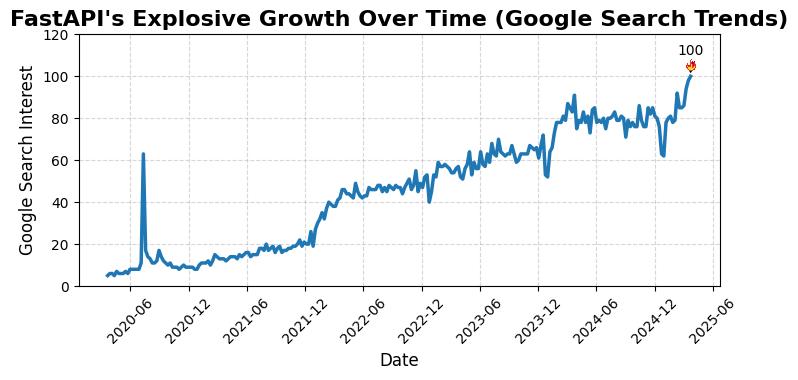
🌍 The map below highlights that this surge in interest isn’t limited to one region — FastAPI’s growth is truly global. It’s clear that FastAPI is here to stay, and its adoption is only set to growth from here.
script start temp
script end temp
💥 What’s Fueling FastAPI’s Explosive Growth ?
FastAPI a Developer Favorite 🧠
The chart below, shows the Github stars the Fastapi repo has gotten both per day (blue) and cumulatively since the projects' inception. As we mentioned previously in the Stackoverflow survey, not only do developers use FastAPI but they also admire it. This indicating developers enjoy working with the framework and of course happy devs😊 = productive devs .
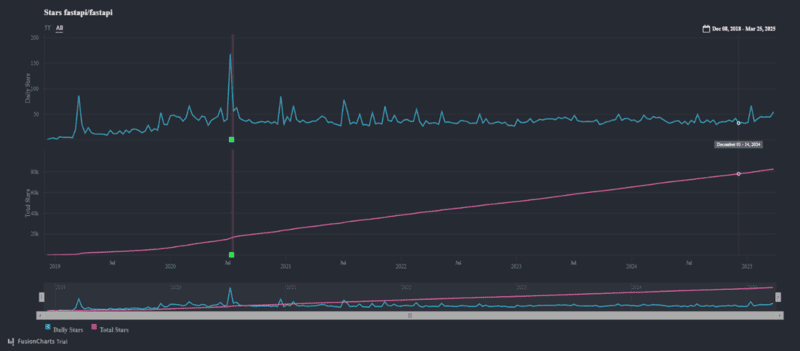
Big Tech Leverages FastAPI for Scalable APIs
FastAPI has reportedly become a core tool for many businesses both small and large, including the some of the US tech giants. Its combination of high performance and short development-to-production time makes it an excellent choice for tech startups, both big and small.. Major players like Uber, Netflix, Microsoft, Expedia Group and there are also numerous smaller software companies leveraging FastAPI for its dev friendly experience combined with stellar performance.
Some of these firms are actively building with FastAPI, which in turn increases incentives for devs to learn it ➡️ the framework will continue to grow and evolve.
So if tech companies worth trillions💸💸 in combined market cap are adopting FastAPI 🚀—do you really need any more reason to start tinkering with it? 🔧
Sure, the salary of a software engineer at Google might be the holy grail 🏆—but let’s be real, developers at Netflix and Microsoft aren’t exactly struggling either. The fact that these companies are using FastAPI? That’s a pretty strong signal for where the smart money (and code) is headed.
How the FastAPI Stack has Propelled Framework Growth 🧱
In this section, we’re going to look at the building blocks that make FastAPI tick under the hood. This section is aimed at developers with a litte bit of experience 👨💻👩💻 — although feel free to read on if you can stomach a little jargon 😉.
Asyncio
First off — If you plan on becoming a professional FastAPI developer, it is highly recommended to get up-to-speed on Python's asyncio module.
You’ll often hear people say that FastAPI comes with “async out of the box.” 🤖 When I first started tinkering with it, I thought that was a weird way to describe it — because at first, it just felt like FastAPI wanted you to use async and await. My first impression was that if a route wasn’t async, it would block the event loop i.e. be like the default behavior for Flask software 😬
I was turbo-wrong on that assumption! 🚀 Let me show you why:
Let's take two fastapi endpoints that don't really do much but are exactly the same in terms of the responses.
from fastapi import FastAPI
import asyncio
app = FastAPI()
@app.get("/async")
async def async_route():
return {"message": "FastAPI Server Response"}
@app.get("/sync")
def sync_route():
return {"message": "FastAPI Server Response"}
So take the two routes above — one is async and the other is regular def, aka sync. At first, I thought this meant the sync route would be blocking 🚧 — but that’s actually not true!
What FastAPI does under the hood is basically say:
“Hey, that route’s not async... but we’re an async-first framework 💡, so I’m gonna make it async 😎”
For those that have a bit of experience with asyncio, FastAPI basically throws these otherwise blocking endpoints in to a threadpool.
Whats effectively happening is illustrated by the pseudo code below
import inspect
def is_awaitable(func):
return inspect.iscoroutinefunction(func)
# Pseudo-real demo of what FastAPI might do under the hood
if is_awaitable(route_function):
## async_route() would be here
result = await route_function(*client_request_params)
else:
## the otherwise blocking sync_route() would be here
loop = asyncio.get_running_loop()
result = await loop.run_in_executor(None, route_function, *client_request_params)
Hopefully that all makes sense! In the sort-of-pseudo if/else statement above, you can see that since sync_route isn’t async, FastAPI will convert it into something that can be waited on.If you’re thinking “waited on? What does that even mean?” — don’t worry. In plain English, it just means 👉 FastAPI finds a way to run that function without blocking everything else.
Comparison to Django & Flask Frameworks
- While Django and Flask now support async, FastAPI is async-first by design 🪄.
- FastAPI gives you a clean async pipeline for deployment 🧠⚙️. Flask supports async too if you use ASGI server, but I often found myself unsure what was actually async or blocking skill issue, admittedly — but it's nice to have the deployment steps clearly laid out.. Haven’t tested Django’s async yet.
- Flask / Django, many popular extensions might not play nicely with async code. You might be tempted to say, “Well then, FastAPI is clearly the better choice” — problem with that is since FastAPI is still a relatively young framework, some of those extensions (or equivalents) might not even exist yet ⚖️.
Validation with Pydantic
Pydantic is to FastAPI what Marshmallow is to Flask, except Pydantic is actually a core dependency for FastAPI and that's a pretty good match! Newer releases of FastAPI use Pydantic v2 or higher built in rust lanuage making it extremely fast. Pydantic is on its way to becoming pretty much ubiqitous not only in web frameworks but in the Python ecosystem more broadly, very highly recommended to get to grips with this package, not only if you want to become a FastAPI developer, but also if you’re aiming to grow as a Python developer more broadly.
Let's get stuck in and just show by example what this package does and why it is so important for FastAPI
If you wanna follow along with this part feel free, just remember to install the right packages first
pip install fastapi[all] pydantic[email]
And paste this in to a main.py
#main.py
from fastapi import FastAPI
from pydantic import BaseModel, EmailStr
app = FastAPI()
class User(BaseModel):
first_name: str
last_name: str
email: EmailStr
@app.post("/submit")
async def submit_user(user: User):
message = f"Hello {user.first_name} {user.last_name}, check your email"
return {
"message": message,
"data_received": user.dict(),
}
Run this from terminal
uvicorn main:app --reload
Let's introduce another really cool thing about FastAPI, and that is auto documentation with Swagger, which follows OpenAPI schemas. We can take a look at this app's docs at http://127.0.0.1:8000/docs and we will be directed to the page below. For the professional API developer, a tool like Postman is required, but until then we have a lot of functionality on the swagger docs page.

What's really nice about these Swagger docs, is we can test out our endpoints really easily, to do this we just click on the /submit endpoint, and then on the Try it out button, let's see how Pydantic handles us giving a wrong data type
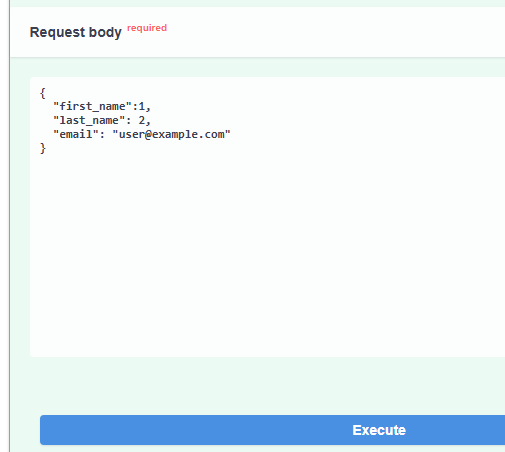
When we click on Execute with these invalid data types, Pyandic will raise an Unprocessable Entity 422 Error as shown below:
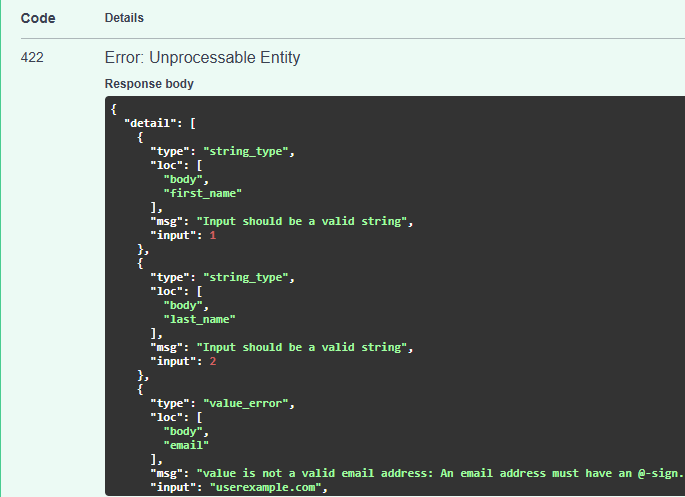
So that might not seem like much — but so what, you might ask? Well, first off, writing all that validation code manually means mountains of unnecessary boilerplate 🥱. Total waste of time.
What’s even better is that Pydantic combined with FastAPI does deep validation — each field is checked 🗸 individually, and you get detailed error messages ❌ instead of a vague "something went wrong."
I have never tried to do it manually, but I am guessing proper validation of a critical user field such as email, is much harder than it looks, so having all these tools is great!
This kind of built-in validation really does save an incredible amount of time, especially when building real-world APIs. You will also notice in the swagger docs, there a Schemas section
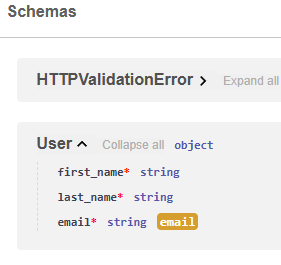
Right out of the box, we get an easy way to test the API, validate what users send in, and work better with the rest of the software development team.
Comparison to Django & Flask Frameworks
- 🔍 Built-in docs vs external tools: FastAPI automatically generates interactive API documentation using Swagger UI and OpenAPI, right out of the box — no extra setup. In contrast, Flask and Django require third-party libraries (like Flask-RESTX, Flask-Smorest, or DRF with coreapi/Swagger extensions) to get similar functionality.
- ✅ Validation batteries included: FastAPI uses Pydantic for data validation automatically. Flask and Django (including Django REST Framework) require more manual setup or external serializers to achieve equivalent field-by-field validation and structured error messages.
How much do FastAPI Developers Make & How to Become one?
So if you're new to software development 💻 or thinking about breaking into the industry 🚀, you might’ve already taken a few online courses or tutorials. And let’s be honest — a constant thought is: "Is it worth it?" or "How much will I actually earn?" 💰 Well, spoiler alert: after a few online software development courses, it’s unlikely you’ll be earning the wages of a Google engineer right away 💼💸 — but that doesn’t mean it’s out of reach
The Statistics
Let’s take a look at some of the latest stats from Ziprecruiter, a solid resource if you’re on the job hunt 🔍.
It looks like for salaried positions, the average is around $110k annually — not too bad at all! 💰 That said, it’s safe to assume most of these roles are filled by developers with at least some real-world experience.
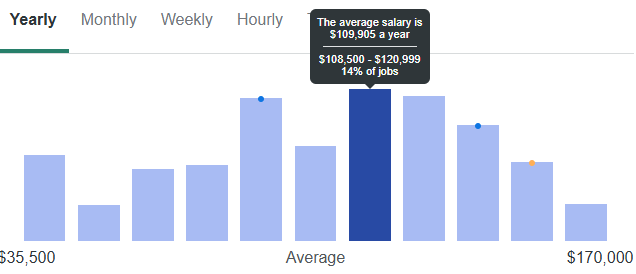
OK, so maybe you’re not really the full-time salary type — maybe your plan is to work as a contractor or freelancer instead 💼💻. Well, good news: according to ZipRecruiter, the average hourly rate for FastAPI-related roles is a solid $53/hour 💸.
What’s even better? If you’re looking to break into remote software development 🌍🏠, you’re in luck — freelance and contract roles are often way more open to remote work 🛋️☕.
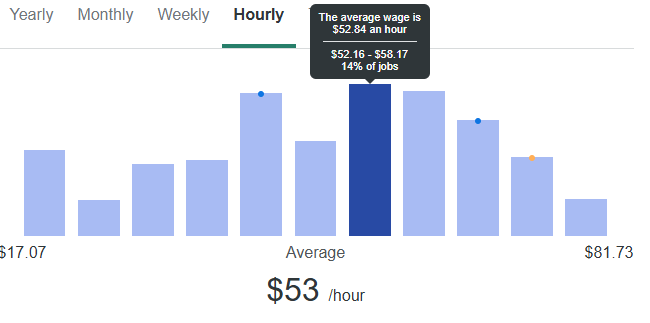
Now, here’s the catch ⚠️ — most of these high-paying roles are based in California 🌴💻. In fact, 8 out of the top 10 locations listed on ZipRecruiter are in the Golden State.
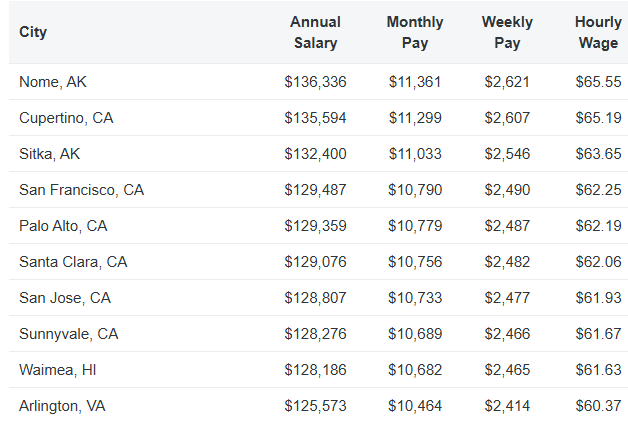
So maybe you're not based in the California tech hub — maybe you're in London, Kraków, Hong Kong, Bangalore, or one of the many growing tech cities around the world 🌍💻.
How much will you earn? Well, that’s a bit trickier to pin down — but here’s the real truth: Software developers are generally well paid, no matter where you are 💰.
The key isn’t obsessing over the exact number — it’s about building in-demand, modern skillsets that companies everywhere are looking for 🔧📈. And that’s where tools like FastAPI come in strong.
From Zero to Developer: Learn FastAPI and Land Your First Tech Gig
Getting started is nearly always the hardest part 💻. When you're trying to break into software development, especially with zero experience, it can feel overwhelming just figuring out where to start. There are endless tutorials, conflicting advice, and way too many YouTube rabbit holes 🌀.
If you’re serious about becoming a developer, whether you're aiming for a full-time job, freelance gigs, or just trying to build cool stuff, the best thing you can do is start with a focused, modern roadmap. And that means learning tools that are actually used in real-world jobs — not just theory and who knows maybe that Google software dev salary will be yours before you know it.
Here’s a step-by-step checklist for breaking into software development, especially if you're looking to level up fast with Python and FastAPI.
✅ Your Developer Break-In Checklist
📚 Further Reading
- 🔗 3 Proven Ways to Run a Python Script in the Cloud (Step-by-Step Guide)
- 🔗 How to Set Up a Free Google Cloud VM for Python or FastAPI Hosting
- 🔗 Ultimate Guide to Deploying a FastAPI App with Nginx on a Linux Server